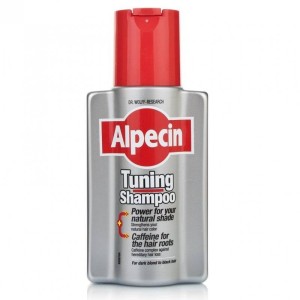Alpecin Caffeine Shampoo is not a hair restoration product. This product actually works by thickening the hair shaft thus giving hair a thicker and more lustrous appearance. So how exactly does it do this?
Being oil-based, Alpecin Caffeine Shampoo locks moisture onto the hair shaft causing it to thicken for a period of several hours after use and offering a temporary solution to the problem of thinning hair. In terms of appearance and self-confidence this can be exactly the kind of short-term boost the user is looking for if they have a date or an important business meeting for instance. In fact, many people who have used Alpecin have remarked on not only feeling boosted in the appearance and confidence stakes but also perceiving their energy levels as higher – could it be the caffeine or just a knock-on feel good effect?
A number of Alpecin users have also remarked on experiencing a tingling sensation on their scalp following usage, so maybe this is part of the energizing effect? Or could it be that often initially unreported effect of increased self-confidence, where the individual embarks on a healthy eating or exercise program and does actually increase their own energy levels and sense of well-being?
However it works, the verdict is fairly split on Alpecin, with many of those who have tried it claiming it did nothing to alter the appearance of their thinning hair, while others claim that it causes scalp dryness and they gain the best effect using it intermittently with another shampoo, whilst still others are claiming that as well as providing a boost to their hairs’ appearance they can also see an improvement to thinning areas and wouldn’t be without it!
So Alpecin Caffeine Shampoo isn’t a long term solution to thinning hair given that it works primarily on a cosmetic level. However, anecdotal evidence and product review content seem to indicate that it is an effective solution for some who are starting to notice the effects of hair loss and it could well be the right product for you at this point in time.



